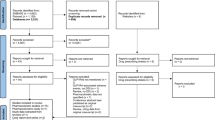Summary
Five poor metabolisers (PM) and seven extensive metabolisers (EM), of debrisoquine, all healthy volunteers, received 50 mg indoramin orally following an overnight fast. Plasma concentrations of indoramin and 6-hydroxyindoramin were determined by HPLC with fluorimetric detection.
In PM subjects, mean values of Cmax (158 ng/ml) and AUC(0–24) (2556 ng·h·m−1) for indoramin were substantially elevated and t1/2β (18.5 h) prolonged by comparison with values in the EM subjects (21.6 ng/ml, 151 ng·h·ml−1 and 5.2 h respectively). For 6-hydroxyindoramin, on the other hand, Cmax (12.4 ng/ml) and AUC(0–8) (47.5 ng·h·ml−1) in PM subjects were significantly lower than in the EM subjects (28.2 ng/ml and 94.7 ng·h·ml−1).
There was a tendency to a higher incidence of side-effects in the PM group. Although the difference did not achieve statistical significance (0.1>p>0.05), all the PM subjects experienced sedation compared to only two in the EM group. Differences in blood pressure and pulse rate between the two groups were small.
It is concluded that the oxidative metabolism of indoramin is subject to genetic polymorphism, which is probably under the control of the same gene locus as that influencing debrisoquine oxidation. The clinical consequences are discussed.
Similar content being viewed by others
References
Bertilsson L, Dengler HJ, Eichelbaum M, Schulz HU (1980) Pharmacokinetic covariation of defective N-oxidation of sparteine and 4-hydroxylation of debrisoquine. Eur J Clin Pharmacol 17: 153–155
Delaunois AL (1973) Biostatistics in pharmacology, vol II. Pergamon Press, Oxford, p 889
Franklin RA, Pierce DM (1981) Studies on the biotransformation of indoramin in the patas monkey. Xenobiotica 11: 755–762
Franklin RA, Robson P, Stevenson D (1983) Studies on the metabolism of the new anti-hypertensive agent, indoramin, in man. Eur J Clin Pharmacol 24: 629–634
Idle JR, Smith RL (1979) Polymorphism of oxidation at carbon centers of drugs and their clinical significance. Drug Metab Rev 9: 301–317
Idle JR, Sloan TP, Smith RL, Wakile LA (1979) Application of the phenotyped panel approach to the detection of polymorphism of drug oxidation in man. Br J Pharmacol 66: 430P
Lennard MS, Tucker GT, Silas JH, Freestone S, Ramsay LE, Woods HF (1983) Differential stereoselective metabolism of metoprolol in extensive and poor debrisoquine metabolisers. Clin Pharmacol Ther 34: 732–737
Mahgoub A, Idle JR, Dring LG, Lancaster R, Smith RL (1977) Polymorphic hydroxylation of debrisoquine in man. Lancet 2: 584–586
Norbury HM, Franklin RA, Marrott PK, Warrington SJ (1983) Pharmacokinetics of intravenous indoramin in middle-aged male and female volunteers. Eur J Clin Pharmacol 25: 243–246
Norbury HM, Franklin RA, Marrott PK, Warrington SJ (1984) Pharmacokinetics of oral indoramin in elderly and middle-aged female volunteers. Eur J Clin Pharmacol 27: 247–249
Oates NS, Shah RR, Idle JR, Smith RL (1982) Influence of oxidation polymorphism on phenformin kinetics and dynamics. Clin Pharmacol Ther 32: 827–834
Pierce DM, Abrams SML, Franklin RA (1987) Bioavailability and pharmacokinetics in volunteers of the antihypertensive agent indoramin and its metabolite 6-hydroxyindoramin. Eur J Clin Pharmacol (in press)
Pierce DM, Smith SE, Franklin RA (1986) The pharmacokinetics of indoramin and 6-hydroxyindoramin in poor and extensive hydroxylators of debrisoquine. Proc IIIrd World Conference on Clinical Pharmacology, Stockholm, 27th July–1st August, 1986. Acta Pharmacol Toxicol 59 [Suppl 1]: 117
Stannard M, Cohen M, Marrott PK, Pascucci V (1986) Antihypertensive therapy with indoramin: Risk-benefit profile in clinical practice. J Cardiovasc Pharmacol 8 [Suppl 2]: S48
Swaisland AJ (1981) Determination of therapeutic concentrations of indoramin by liquid chromatography with fluorescence detection. Analyst 106: 717–719
Volans GN, Jeffereys D, Latham AN, Frost T (1982) Pharmacokinetics of oral indoramin. Curr Med Res Opin 8: 51–53
Author information
Authors and Affiliations
Rights and permissions
About this article
Cite this article
Pierce, D.M., Smith, S.E. & Franklin, R.A. The pharmacokinetics of indoramin and 6-hydroxyindoramin in poor and extensive hydroxylators of debrisoquine. Eur J Clin Pharmacol 33, 59–65 (1987). https://doi.org/10.1007/BF00610381
Received:
Accepted:
Issue Date:
DOI: https://doi.org/10.1007/BF00610381




